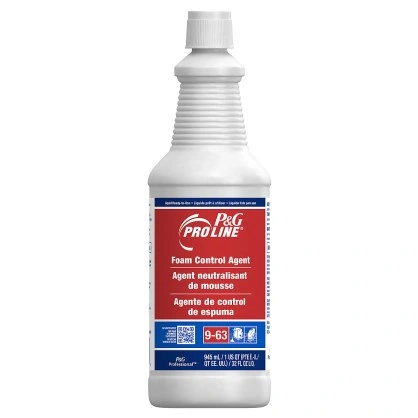Typical Challenges in Foam Control and Just How to Get rid of Them Successfully
Typical Challenges in Foam Control and Just How to Get rid of Them Successfully
Blog Article
A Comprehensive Guide to Carrying Out Foam Control Solutions in Your Workflow
Efficient foam control is an important element of operational performance that usually goes neglected. Comprehending the intricacies of foam generation can substantially impact both productivity and item quality. By analyzing crucial factors such as application compatibility and personnel training, companies can enhance their foam administration initiatives.
Recognizing Foam Obstacles
Foam difficulties are a significant concern across various sectors, influencing functional performance and product top quality. The formation of too much foam can impede processes such as mixing, transport, and storage, causing boosted downtime and waste. In markets like food and beverage, pharmaceuticals, and petrochemicals, foam can hinder production lines, triggering item incongruities and contamination threats.
In addition, foam can block tools performance, causing pricey repair services and maintenance. In wastewater therapy, foam can interrupt clarifier operations, resulting in lower therapy performance and regulative conformity issues.
Recognizing the underlying sources of foam generation is important for reliable administration. Aspects such as surfactants, temperature variations, and agitation degrees can all add to foam manufacturing. Recognizing these components enables markets to implement targeted techniques that decrease foam formation while keeping product stability.
Kinds of Foam Control Solutions

Mechanical options include the use of gadgets such as foam skimmers or defoamers. Chemical solutions, on the various other hand, include the application of defoaming representatives-- substances that interrupt the foam structure, leading to its collapse. Foam Control.
Finally, operational techniques concentrate on procedure modifications. This might involve customizing devices specifications, such as temperature and pressure, or transforming the flow prices of liquids to decrease foam generation. Applying excellent housekeeping techniques can additionally minimize foam formation by lowering contaminants that contribute to foam stability.
Selecting the appropriate foam control option includes assessing the details needs of the procedure, consisting of the type of procedure, the features of the products included, and safety factors to consider.
Choosing the Right Products
Choosing the appropriate foam control items needs a complete understanding of the specific application and its unique difficulties. Elements such as the kind of foam, the environment in which it occurs, and the desired end result all play essential roles in item choice. Foam Control. In markets like food handling, it is important to select food-grade defoamers that comply with safety and security guidelines while effectively managing foam.
In addition, consider the viscosity of the liquid where the foam problem exists. Some items are created for low-viscosity applications, while others are customized for thicker liquids. Compatibility with existing processes is one more essential aspect; the chosen foam control representatives must integrate flawlessly without interrupting overall operations.
An additional important factor is the approach of application. Some items might call for dilution, while others can be used directly. Analyzing the ease of usage and the required dosage can supply insights right into the item's performance and cost-effectiveness.
Implementation Approaches
Successful application strategies for foam control solutions call for a systematic method that lines up item option with operational demands. The very first step involves a detailed evaluation of the processes where foam occurs, identifying particular areas that demand treatment. By involving cross-functional groups, including high quality, production, and engineering assurance, organizations can gather understandings that notify the option of the most efficient foam control products.
Next, it is essential to develop clear objectives for foam decrease, guaranteeing that these objectives are achievable and measurable. This might entail defining acceptable foam degrees and the timelines for execution. Training workers on the properties and application methods of selected foam control representatives is equally essential, as correct usage is essential for ideal outcomes.
Additionally, incorporating foam control remedies right into existing process needs mindful preparation. Organizations must develop a phased implementation plan, enabling changes based upon first outcomes. Normal communication and feedback loopholes with team associated with the procedure will assist in timely problem-solving and foster a society of continuous renovation. Inevitably, a well-structured method will certainly boost functional effectiveness while efficiently taking care of click here for more info foam-related difficulties.
Monitoring and Assessing Efficiency
Surveillance and reviewing the performance of foam control services is essential for guaranteeing that implemented methods yield the desired outcomes. This procedure involves organized data collection and evaluation to evaluate the performance of foam control agents and techniques. Secret performance indicators (KPIs) should be developed before application, permitting a clear baseline against which to determine progress.

Examining efficiency likewise needs regular evaluations of foam control treatments and representative efficacy. This can be completed through sampling and screening, permitting drivers to establish if current options are meeting operational demands. In addition, it is crucial to obtain feedback from group participants who connect with these systems daily, as their insights can expose functional subtleties that measurable data may overlook.

Eventually, a structured surveillance and examination structure aids recognize essential modifications, making certain that foam control solutions continue to be efficient, cost-efficient, and aligned with organizational goals.
Final Thought
In conclusion, reliable foam control services are vital for optimizing functional performance and maintaining product quality. An extensive understanding of foam difficulties, incorporated with the choice of proper products and application strategies, facilitates the effective management of foam generation.
Applying great housekeeping techniques can likewise mitigate foam formation by minimizing pollutants that contribute to foam security.
Picking the best foam control items needs an extensive understanding of the specific application and its special challenges (Foam Control).Successful execution methods for foam control remedies call for an organized method that straightens item option with functional needs.In final thought, effective foam control remedies are vital for my review here maximizing functional effectiveness and maintaining product high quality. A thorough understanding of foam challenges, incorporated with the selection of ideal items and execution techniques, facilitates the effective monitoring of foam generation
Report this page